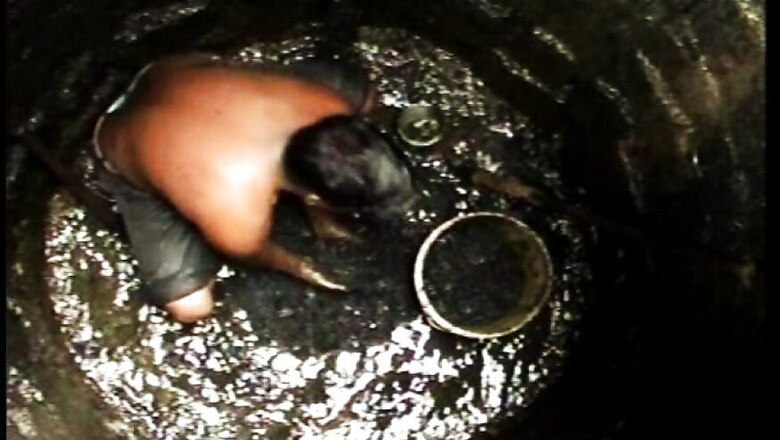
views
New Delhi: The death of a sanitation worker while cleaning a sewer line in Dwarka's Dabri area last Friday has brought the spotlight back on the dangerous practice of manual scavenging. Last week too, five men died due to suffocation when they entered a sewage treatment plant in New Delhi’s Moti Nagar area.
What the Law Says
The Prohibition of Employment as Manual Scavengers and their Rehabilitation Act, 2013, forbids the employment of any person for the task of manual scavenging by any agency or individual. As picking up untreated human excreta is harmful to one’s health and hygiene, the Act seeks to completely ban the practice.
In 2013, right after the prohibition act came into force, the government had recognised 12,742 manual scavengers in 13 states, out of which 82 per cent were in Uttar Pradesh alone. But the 2011 census showed that 740,078 households across the country were still dependent on the manual scavengers for cleaning their latrines.
The act lays down the rules and procedure for the rehabilitation of manual scavengers through training in alternate employment, financial help and help with purchasing property.
As per the officials responsible for identifying the manual scavengers, the act recognises that every local authority (municipality or panchayat), cantonment board and railway authority is responsible for surveying its area to identify manual scavengers.
But this act was not the first one to deal with manual scavenging. The Employment of Manual Scavengers and Construction of Dry Latrines (Prohibition) Act was passed by the parliament in 1993, and set imprisonment of up to one year and a fine of Rs 2,000 for pushing a person to manual scavenging. But there were no convictions under the act.
In 2000, Safai Karamchari Andolan, a non-profit organisation, filed a public interest litigation in the Supreme Court seeking a directive to end the deaths caused in sewer lines, septic tanks and manholes. Soon the 2013 act was implemented.
Has the Law Put an End to Manual Scavenging?
The act defines what is ‘hazardous cleaning’. In a sense, it mandates that the person who is getting the job done must provide the cleaner with ‘protective gear’. This particular protective gear has been a subject of debate.
Requirements of oxygen cylinder, torches, and constant monitoring of workers through computers etc. are not mentioned in the act and hence are not provided to the cleaners.
The primary step under the act has been to demolish the insanitary latrines, open drains and pits.
The law prohibits any person, municipality, panchayat or agency to build an insanitary latrine, or employ a manual scavenger. But open defecation is still widespread and there are about 2.6 million insanitary latrines (dry toilets) that require cleaning by hand.
However, a ray of hope surfaced after the Supreme Court issued a slew of directions in 2014 to prevent and control the practice and also to prosecute the offenders. It also directed the government to pay a compensation of 10 lakh rupees to the family members of those killed in acts of manual scavenging since 1993.


















Comments
0 comment